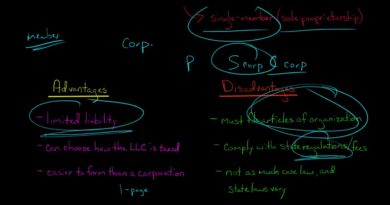Accounting firm economics: a breakdown
If so, it is important to be aware of the responsibilities and rewards that come with owning or being a partner in a small- to midsized accounting firm. If so, it is important to be aware of the responsibilities and rewards it entails, which includes having a clear understanding of accounting firm economics.
While the role of a partner may vary from firm to firm, there are several key responsibilities that are shared among all of the owners. Business management (i.e. resource management, staffing management, quality management etc.) is one of them. ), business direction and strategy, and financial management.
Navigating the business development side can be exciting and rewarding, but it is important to keep in mind that assuming a position of authority within a firm will be a marked shift in your career. Balancing the risks and rewards is critical.
To help professionals in their pursuit to become a successful partner, this article will explore how accounting firm structures work, accounting firm financial management, and how to fuel business opportunities through strategic advisory services.
Ju
m
p to |
Accounting firm structures at small-to-mid-sized firmsWhen structuring an accounting firm, it is important to be aware that there’s no one-size-fits-all approach.A smaller-sized firm (generally 1-6 people) will typically have a more straightforward structure; whereas a mid-sized firm (~7-25 people) may have a more diverse structure. However, what is beneficial when structuring a firm is to first take a step back and evaluate factors like the firm’s size, internal processes, client services, and long-term goals.
Evaluating these factors can help firms establish the structure that best meets their needs and the needs of their clients.
In general, the owner of a small firm will be in charge of higher-level strategic business decisions and will handle such duties as financial decision-making and day-to-day operational management. In mid-sized companies, partners are typically responsible for the strategic vision, growth plans, business development and overall direction of the firm. They also perform some of the tasks of an accountant. In the diamond-shaped organization, strategic leadership is placed at the top. This is followed by business partners who provide guidance to help drive organizational value, then specialists who focus on their areas of expertise, and then the management of processes to gather and extract data.
Accounting firm financial management
It is important for an accounting firm to have solid financial management to help ensure it maximizes profitability and cash flow, remains compliant, and achieves its strategic goals. Focusing on three key areas — client services, pricing, and a growth strategy — can help position firms for success.
Client services
In today’s complex market, clients are increasingly seeking strategic business advice, and a growing number of firms are heeding the call. In the Thomson Reuters 2024 State of Tax Professionals Report, 45% of midsize firm respondents stated that their firms offer business consulting services and 23% are considering it. And among smaller firms, more than half (52%) of small firm respondents said their firms either already provide business consulting services or are considering it.
As the research noted, a similar dynamic is playing out in other service areas such as financial planning, decision-support, and tax strategy.
Accountants who are looking to become firm owners or partners must keep pace with the market forces impacting the profession and understand the important role that forward-looking consulting services can play in remaining competitive.
Pricing
A growing number of firms are not only rethinking the services they provide but also their pricing structure. This means that today’s owners and partners must rethink the traditional hourly charging model. This shift is partly due to the fact, that as firms diversify service offerings, especially advisory services, it’s important that they are compensated properly for the value and expert they deliver. The model gaining the most traction in 2024 is value-based pricing.
Under the value-based pricing model, the firm charges based on expertise, guidance, and results rather than time spent on a particular task. According to Thomson Reuters research, nearly half (48%) of respondents said their firms already offer value-based pricing on some of their services, and 18% said their firms plan to start offering it by the end of the year.
Again, having the right pricing structure in place is an important factor that firm owners and partners must think about when looking to drive revenue in today’s dynamic market.
Growth strategy
Does your firm have a deliberate growth strategy in place? According to the Tax Professionals report, 38% of respondents in the 2024 survey said their firms had a growth strategy in place for the coming year. This is a question that many accounting firm owners and partners ask themselves. It can be difficult to answer because profit margins vary greatly by industry. Is your company focused on compliance? Or are you looking to expand into more strategic advisory services?
Firms that deliver more strategic advisory services are ideally positioned to collect higher billing rates, which is certainly a factor that impacts profitability. When clients understand the value and expertise your firm provides, they are more willing to pay a premium for those higher-margin advisory services.
Opportunities for growth with advisory services
In light of increased client demands, a complex regulatory environment, and advancements in technology, more and more firms are rethinking their business models to provide more higher-value, higher-margin advisory services. Are you one of them? Owners and partners can attract new clients by offering these services and upsell existing clients, as research shows clients want more business guidance. Clients are more specifically looking for business advice, such as tax strategies (90%), planning financial (69%), and support with decision making (47%). Some of the most common barriers cited are lack of expertise and time and staffing restrictions. The good news is that leveraging the right technology tools and resources can help firms improve efficiencies, drive greater automation, and broaden bandwidth to meet the rise in client demands.
Remain competitive and add greater value and profitability to your firm by offering advisory services. Thomson Reuters Practice Forward is a proven road map to success.






